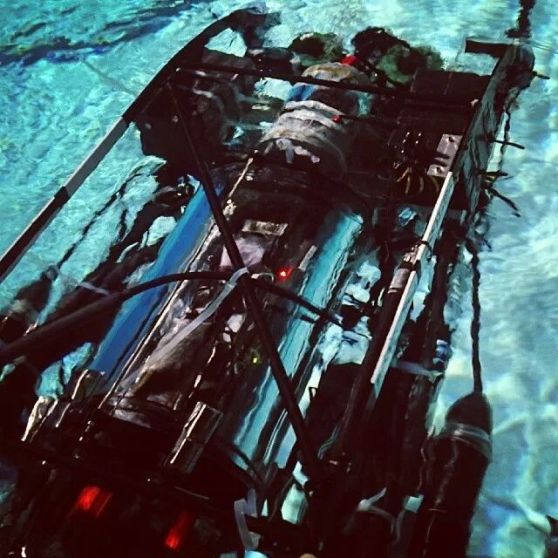The past few months has been a tiring few weeks as me and my team third iteration of the vehicle for Robosub features several upgrades and enhancements to our AUV electrical systems:
Power Systems
- Customized battery pod monitoring system to measure current draw, capacity and voltage. Delivery scheduled for after SAUVC (16th March)
- M4 ATX Motherboard power supply providing voltage rails of 3.3V, 5V, 12V and 24V (direct battery connection)
- Y- PWR offering hot swap capability to allow switching of batteries without affecting the Single Board Computer normal operation
- More efficient power system and reduced single points of failure with the openUPS removed out of the loop.Voltage regulation is only performed at the M4-ATX and the acoustics pre-amplifier end.
- Battery pods were combined to increase the overall endurance of the vehicle before needing to change out the batteries resulting in total of 10800mAh of battery life. Further plans are to increase the total capacity to 16000mAh.
Acoustics
- To perform phase difference detection, small reson hydrophones were used to allow for the half wavelength separate distances as stipulated by the 25 -28 Khz signal from the acoustic pingers.
- Incorporation of a High Pass filter and pre-amplifier PCB design from Acoustics Research Lab, NUS.
- Size reduction in the Digital Signal processing board from the sbRIO 9612 to the sbRIO 9602.
- 10th order band-pass FIR filtering with signal extraction using Fast Fourier Transform.
- Peak detection using dynamic threshold.
- High resolution beam-forming techniques used.
Sensors and Actuators
- Improved internal state sensors with temperature, water leak, internal pressure (delivery after SAUVC) and humidity sensing.
- Sensors and Actuators interface redesigned with PCB fabrication for more reliable circuitry.
- Upgrade from mechanical relays to darlington transistor arrays to control the pneumatic solenoids
- Inclusion of led light strips for autonomous state indication.
- External Bowtech light control for variable illumination.
- DVL switch from workhorse navigator which was more applicable for deep water operations to the explorer DVL catered better for littoral applications
- 2 dedicated videoray thrusters for forward thruster control and 6 seabotix thrusters for sway, heave, roll, pitch and yaw
- Camera upgrades to Guppy cameras and lens with increased Field of View to 70 – 80 degrees. (after SAUVC due to issues with Electromagnetic interference)
Electrical Integration
- State Solid Drive capacity upgraded from 16GB to 512GB to accomodate more rosbag data for post mission analysis.
- Dual motherboard on-off relay switches for increased redundancy.
- Multilevel power distribution box breakouts for better organisation of cabling.
- Molex connector wire to wire housings used instead of direct connection to bulkheads for more flexibility and ease of removal of electronic level. Rack levels are made to be dismantleable without re-soldering required.

